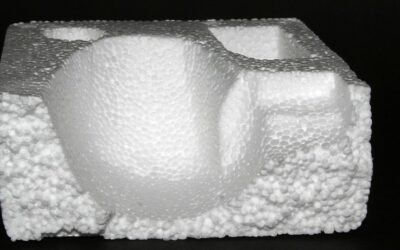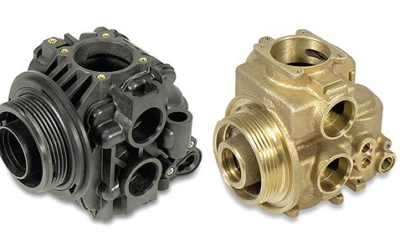The Technological Institute of Aragón Itainnova, attached to the Department of Science, University and Knowledge Society of the Government of Aragon, has presented the results of an investigation on the recycling of FFP2 masks to try to reduce the contamination that, in these times of pandemic , is being generated. In such a way that, from this material, current staple, others for everyday use such as toys, flowerpots or automotive parts, etc. can be produced.
To publicize this initiative, the counselor Maru Díaz has appeared, as president of the Governing Council of Itainnova, accompanied by Esther Borao, director of said center; and Cristina Crespo, doctor and researcher of the Materials and Components team of the Technological Institute of Aragón.
The Councilor for Science of the Government of Aragon stressed that “from Itainnova, from Aragon, we want to provide solutions to this new challenge posed by COVID-19, together with climate change.”
In this sense, he cited the difficulties involved in recycling masks, which can take up to 400 years to decompose, being “logistically complicated because the coronavirus can survive up to three days in plastic materials, there are no adequate public collection points, they need very large quantities and making the masks with three different materials makes the problem even worse ”.
“But science and research are there to answer questions,” said the regional leader, while congratulating herself that “Itainnova has found an effective way to recycle this waste, allowing its reuse to make small objects, such as masks, toy parts or even automotive parts ”.
Esther Borao has indicated that “with this work, the Itainnova Materials team intends to contribute a grain of sand and contribute to climate neutrality and the protection of the environment, challenges that, as a society, we have at the moment”.
For her part, Cristina Crespo, as head of the Itainnova team of researchers who has worked on this project, began by explaining that “surgical masks or FFP2s are made of plastic materials forming filters that prevent small particles and viruses from reaching to our respiratory system ”.
As she has commented, the small size of the pores and the electrostatic treatment they carry prevent the passage of the particles as if it were a strainer. The main difference between surgical masks and FFP2s, as she has said, is in the protection they provide related to the number of layers they are made of and the way they fit the face.
Since Itainnova, she has related, it has been studied what we do with the masks once used, to try to avoid that they end up directly in our rivers, seas or mountains. And she has answered the question of why they are not recycled like other plastics?
The recycling process
As Crespo has recalled, the recycling of plastic material mainly consists of cleaning, separation and classification processes, crushing, melting and crushing again. “In the case of masks, recycling can be a bit more complicated due to disinfection. Also, keep in mind that masks are made of more than one type of plastic. The layers that make up the filters are mainly based on polypropylene (PP), a material that we can find in pieces such as the covers of the masks themselves, the clothespins or in small parts of our cars, among other products. Another of the materials that make up the masks is the polyethylene (PE) that in our daily life we can find it in the bags, or in the jars of our gels. In less quantity there is also the polyethylene etherphatalate (PET) which is the material of the water bottles ”, the researcher explained.
In the process that has been presented today, the separation and classification stage is avoided. “At Itainnova, we wanted to study the option of obtaining a mixture of recycled materials, obtained from the masks. The masks used by the workers have been used, they have been disinfected by spraying with alcohol and with heat. Subsequently, and after the elimination of the rubbers and the adjusting metal, the whole grinding has been carried out without separating any of the different types of plastic. Once we have the material, in flake type format, it has been processed in the same way as other plastics are processed, by extrusion and subsequent injection into a mold. The end result has been pieces with defined geometry ”, she stated.
Finally, Crespo has indicated that the material obtained has been characterized to know the properties of the mixture and it has been found that they are comparable to those that can be obtained with other polypropylene and polyethylene plastics.




